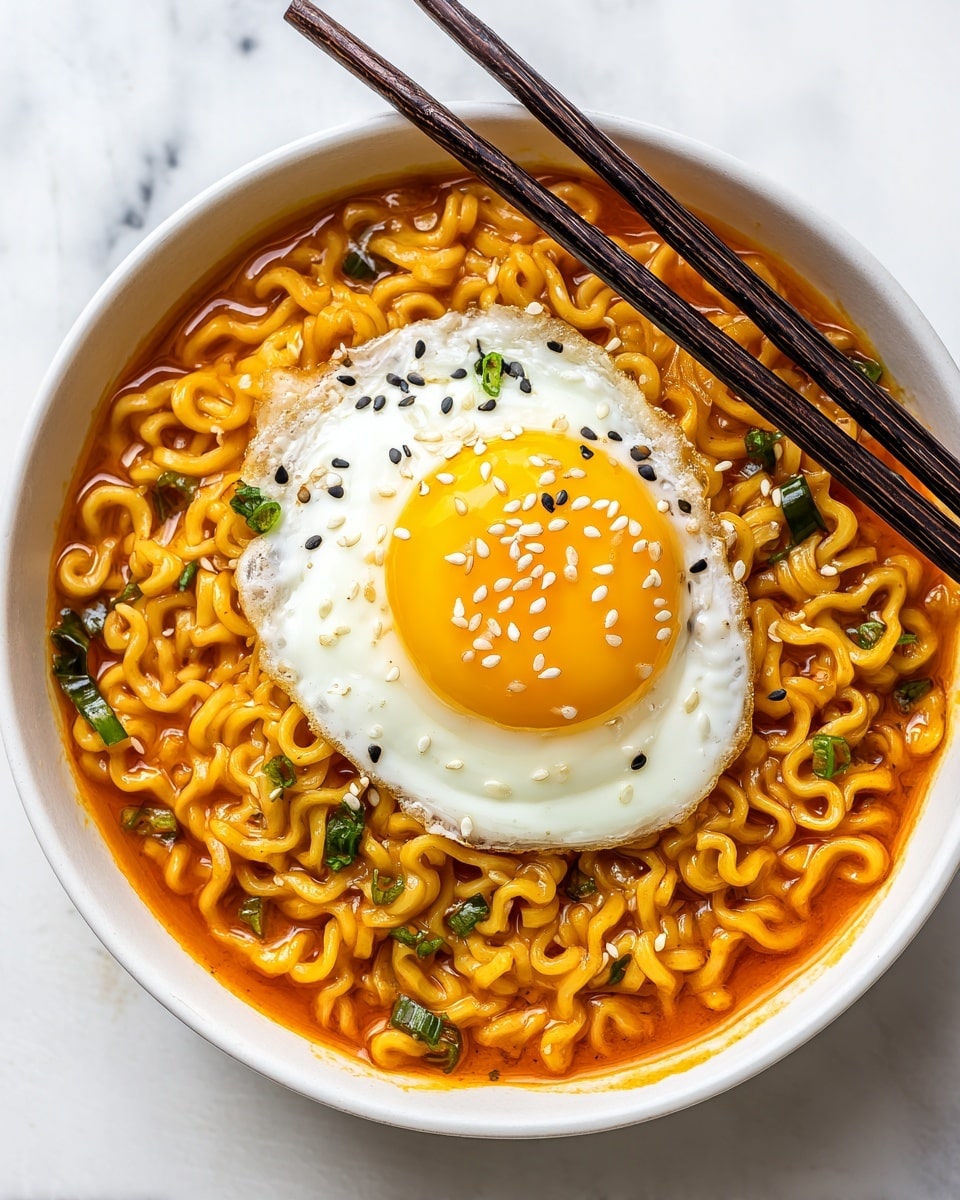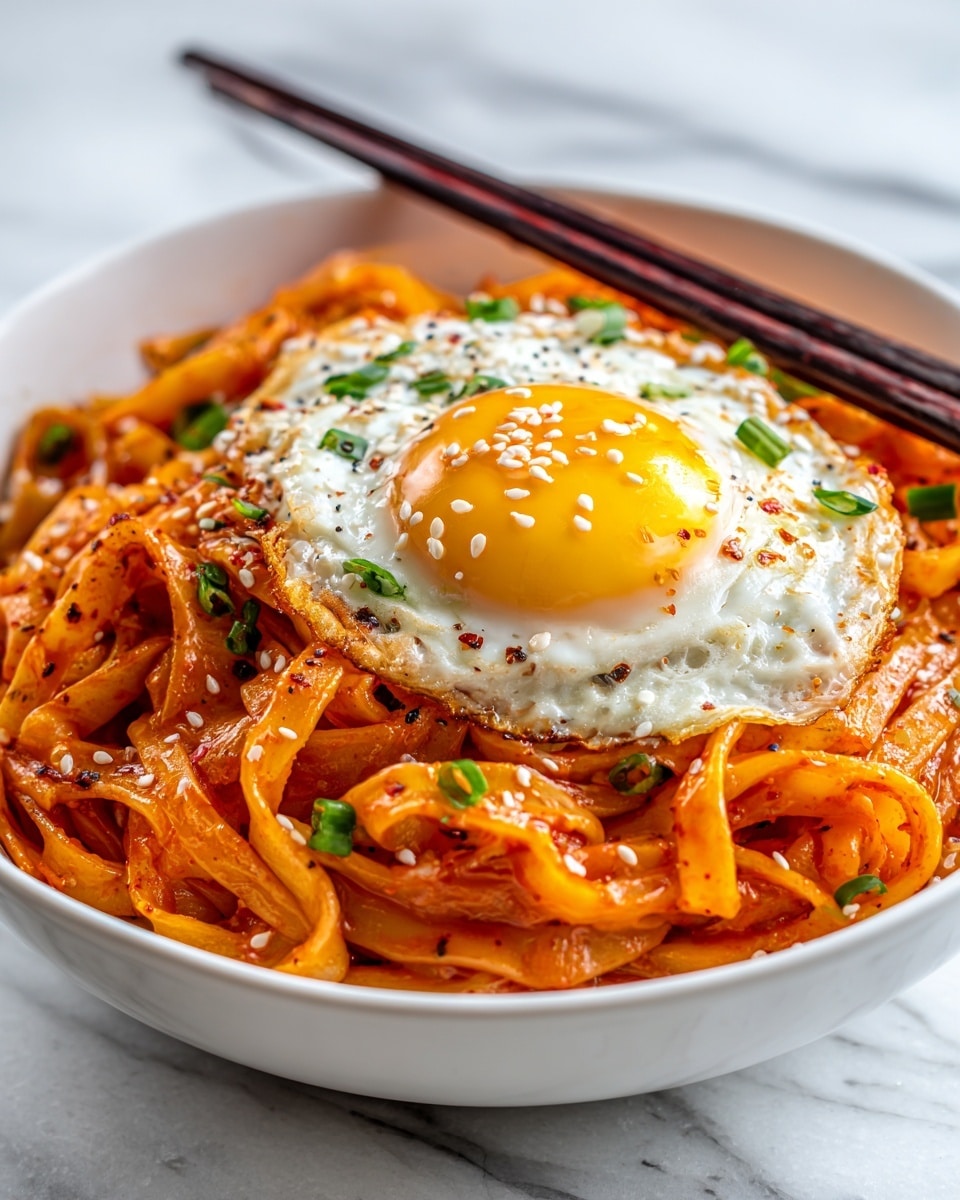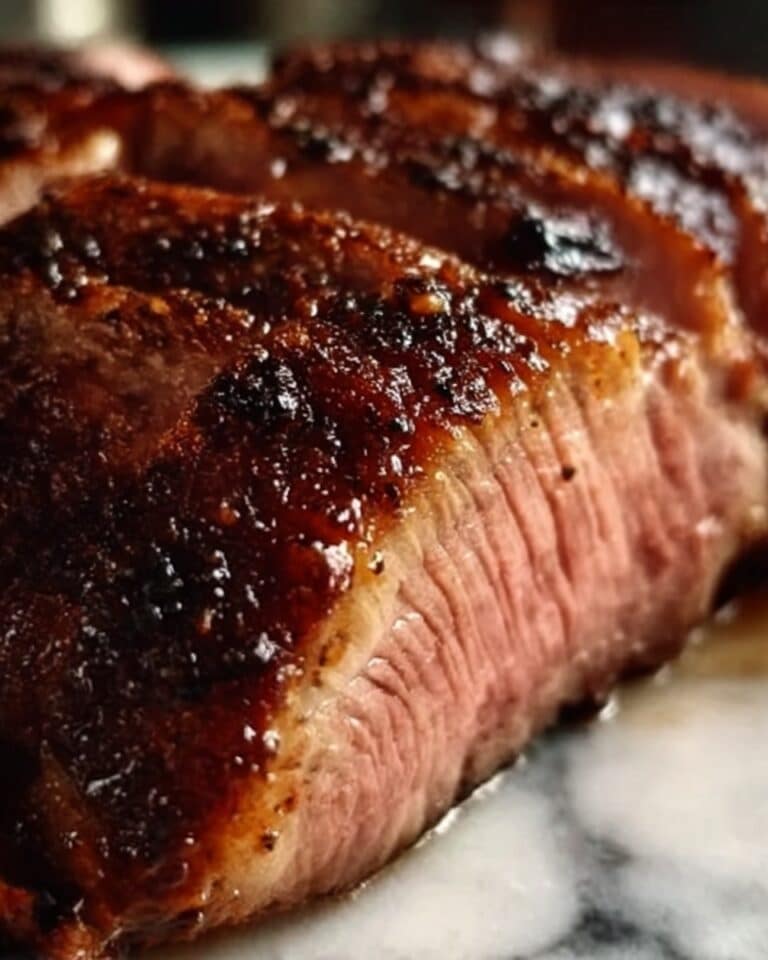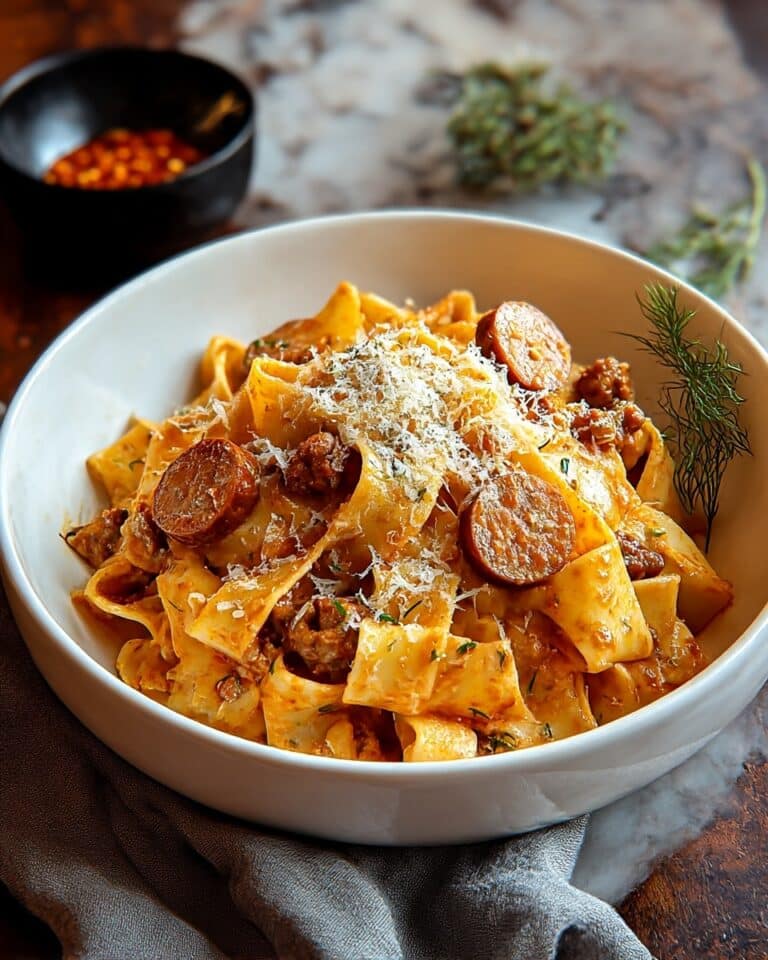If you love bold flavors and quick meals that never disappoint, this Kimchi Udon with Scallions Recipe is going to become your new go-to. It’s a delightful fusion of Korean and Japanese influences, bringing together chewy udon noodles drenched in a lively, spicy kimchi sauce and brightened with fresh scallions. Whether you’re craving a satisfying weeknight dinner or a comforting lunch, this dish comes together in under 20 minutes and offers layers of savory, tangy, and umami goodness that really hit the spot.
Ingredients You’ll Need
Don’t be fooled by this recipe’s simplicity—the ingredients here are straightforward but absolutely essential. Each one adds its own unique twist to the dish, from the softness of udon noodles to the spicy kick of kimchi and the nutty depth of toasted sesame oil and seeds.
- Fresh or frozen udon noodles: The thick, chewy base that holds all the sauce and flavor beautifully.
- Kimchi (chopped, with juice): Adds the signature tangy, spicy punch that defines this dish.
- Sesame oil: A fragrant finish that gives a toasty, rich aroma.
- Garlic cloves (minced): A classic flavor booster that makes the dish irresistible.
- Soy sauce: Brings salty, savory depth and umami complexity.
- Gochujang (optional): For those who crave an extra layer of spicy heat and sweetness.
- Sugar: Balances acidity and rounds out the flavor profile.
- Scallions (thinly sliced): Freshness and crunch that complement the rich noodles perfectly.
- Vegetable oil: For sautéing and creating those slightly crisp textures.
- Toasted sesame seeds (for garnish): Adds nuttiness and a lovely crunch at the end.
- Fried egg (optional): A luscious, creamy topping that makes the meal extra indulgent.
How to Make Kimchi Udon with Scallions Recipe
Step 1: Cook the Udon Noodles
Start by cooking your fresh or frozen udon noodles according to the package instructions. Once they’re perfectly tender yet chewy, drain them and rinse under cold water to stop the cooking process and prevent sticking. Set aside so they’re ready to absorb the delicious sauce in the next steps.
Step 2: Sauté the Garlic and Kimchi
Heat your vegetable oil in a skillet or wok over medium heat, then add the minced garlic. Sauté for about 30 seconds until fragrant but not browned. Immediately add the chopped kimchi and stir-fry for 2 to 3 minutes to release those spicy, tangy aromas that form the heart of this dish.
Step 3: Build the Flavor Base
Next, it’s time to add the soy sauce, sesame oil, gochujang if you like it spicy, and sugar. These ingredients balance and boost the kimchi’s flavor, creating a rich, complex sauce. Stir well to combine everything and let the mixture bubble gently for another minute.
Step 4: Toss the Noodles
Add the drained udon noodles to the skillet and toss them thoroughly in the kimchi sauce until every strand is beautifully coated and warmed through. This step takes about 2 to 3 minutes. The noodles soak up the vibrant flavors, marrying chewy texture with the spicy, tangy sauce.
Step 5: Add Scallions and Garnish
Remove the pan from the heat and fold in the thinly sliced scallions. Their fresh, mild onion flavor adds a lovely contrast to the dish. Finish by sprinkling toasted sesame seeds on top. If you want to make it extra special, serve with a fried egg on top—that luscious yolk is just the perfect creamy counterpoint to the zingy noodles.
How to Serve Kimchi Udon with Scallions Recipe
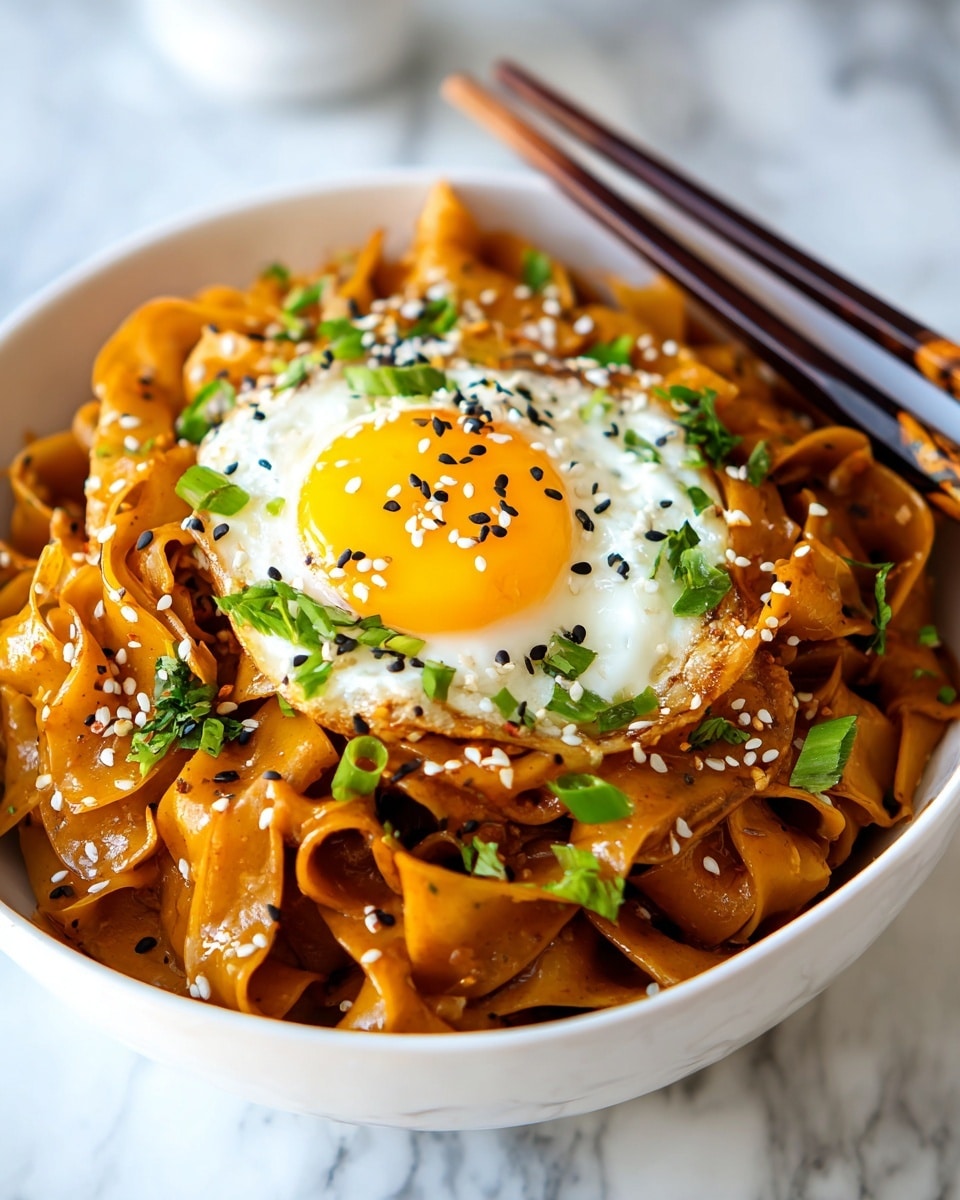
Garnishes
Garnishes are what make this dish pop visually and flavor-wise. Sprinkle on extra toasted sesame seeds for crunch and nuttiness, and if you’re feeling indulgent, a perfectly fried egg will elevate your bowl to restaurant-worthy status. A few additional scallion slices or even a light drizzle of chili oil can add another exciting layer of flavor.
Side Dishes
This kimchi udon pairs wonderfully with light and fresh side dishes. Consider crisp cucumber salad, steamed edamame, or a simple miso soup. These sides bring balance, ensuring your meal is hearty but not heavy, making every bite feel fresh and exciting.
Creative Ways to Present
For a fun twist, try serving this Kimchi Udon with Scallions Recipe in individual bowls garnished with microgreens or sesame leaf. Layering it with toppings like sautéed mushrooms, tofu cubes, or shredded chicken can transform the experience from a quick snack to a full-fledged feast. Presentation is all about making this vibrant dish look as delightful as it tastes!
Make Ahead and Storage
Storing Leftovers
If you have leftovers, transfer them to an airtight container and refrigerate. They’ll stay fresh for up to 2 days. The noodles may absorb some of the sauce over time, so give it a quick toss before reheating to redistribute flavors evenly.
Freezing
While freezing is possible, keep in mind that udon noodles can become softer after thawing. If you must freeze, store the noodles and kimchi mixture separately if possible, and use them within 1 month for best texture and taste.
Reheating
Reheat leftovers gently in a skillet over medium heat, adding a splash of water or broth to loosen the sauce. Stir frequently until warmed through. Avoid the microwave if you can; the skillet method helps maintain the chewy texture of the noodles and keeps the flavors vibrant.
FAQs
Can I use dried udon noodles instead of fresh or frozen?
Absolutely. Just be sure to cook dried udon noodles according to the package instructions, as they typically take longer to cook than fresh or frozen. Once cooked, follow the same recipe steps for the best results.
Is this Kimchi Udon with Scallions Recipe vegan?
Yes! Simply skip the optional fried egg topping, and you’ve got a delicious vegan-friendly meal packed with flavor and texture.
Can I make this dish spicier?
Definitely. Increase the amount of gochujang or add a pinch of red pepper flakes to amp up the heat. Just add gradually and taste as you go to suit your spice preference.
What if I don’t have gochujang?
If you don’t have gochujang on hand, you can leave it out or substitute with a small amount of chili garlic sauce or sriracha. The flavor will be a bit different but still delicious.
How do I store leftover kimchi to keep it fresh?
Store kimchi in a tightly sealed container in the refrigerator. It will continue to ferment slowly, developing stronger flavors over time, which actually enhances dishes like this kimchi udon.
Final Thoughts
This Kimchi Udon with Scallions Recipe is a vibrant, comforting dish that brings together bold flavors and chewy noodles with incredible ease. It’s perfect for busy days when you want something both quick and satisfying. I can’t wait for you to try this fusion magic—it’s truly a bowl of happiness that warms you from the inside out.
Print
Kimchi Udon with Scallions Recipe
- Prep Time: 10 minutes
- Cook Time: 10 minutes
- Total Time: 20 minutes
- Yield: 2 servings
- Category: Main Course
- Method: Stovetop
- Cuisine: Korean-Japanese Fusion
- Diet: Vegetarian
Description
Kimchi Udon with Scallions is a quick, savory, and umami-packed noodle dish featuring thick, chewy udon noodles tossed in a spicy kimchi sauce with scallions, garlic, and a touch of sesame. Perfect for weeknight dinners or a comforting lunch, this flavorful Korean-Japanese fusion recipe comes together in under 20 minutes.
Ingredients
Noodles
- 2 servings fresh or frozen udon noodles
Kimchi Sauce
- 1 cup kimchi (chopped, with juice)
- 2 teaspoons sesame oil
- 2 garlic cloves (minced)
- 1 tablespoon soy sauce
- 1 teaspoon gochujang (Korean chili paste, optional for extra heat)
- 1 teaspoon sugar
- 1 tablespoon vegetable oil
Garnishes and Additions
- 2 scallions (thinly sliced)
- Toasted sesame seeds (for garnish)
- Fried egg (optional, for serving)
Instructions
- Cook the noodles: Cook the udon noodles according to the package instructions. Once cooked, drain and rinse them under cold water to stop cooking and remove excess starch. Set aside.
- Sauté garlic: In a skillet or wok over medium heat, heat the vegetable oil and sauté the minced garlic for about 30 seconds until fragrant but not browned.
- Cook kimchi: Add the chopped kimchi to the skillet and cook for 2 to 3 minutes, stirring occasionally, until the kimchi is fragrant and slightly softened.
- Add sauces and seasonings: Stir in the soy sauce, sesame oil, gochujang (if using), and sugar into the kimchi mixture. Mix well to combine all flavors.
- Toss noodles: Add the drained noodles to the skillet and toss everything together until the noodles are well coated with the kimchi sauce and heated through, about 2 to 3 minutes.
- Finish with scallions: Remove the skillet from heat and stir in the sliced scallions to add freshness and a pop of color.
- Garnish and serve: Plate the kimchi udon, garnish with toasted sesame seeds, and serve hot. Top with a fried egg if desired for extra richness and protein.
Notes
- Use well-fermented kimchi for the deepest, most complex flavor.
- This dish is easily adapted to be vegan—simply omit the fried egg.
- Feel free to add mushrooms, tofu, or shredded chicken for a heartier meal.

